Providing hope and healing for more than 100 years
MultiCare’s roots reach back to 1882, with the founding of our first hospital in Tacoma. More than a century later, MultiCare Health System is still meeting the needs of patients and supporting our communities, from the Puget Sound to the Inland Northwest.
Our story is one of vigorous growth, visionary leadership and deep compassion. MultiCare has met the challenges of each age — from the Great Depression to World War II to the COVID-19 pandemic — with resilience, ingenuity and teamwork.
We invite you to step into the past — witness our evolution from a single hospital to a thriving health system. These milestones are a testament to the dedication of our caregivers and our ongoing commitment to the health and well-being of the people we serve.
The Paddocks found Tacoma’s first hospital, planting the seeds for MultiCare Health System
MultiCare’s story begins in Tacoma with the founding of Fannie C. Paddock Memorial Hospital.
Bishop John A. Paddock establishes Tacoma’s first hospital in honor of his wife, Fannie, who died one year earlier as the couple traveled from New York to Washington. It was their dream to provide health care to people living in the West. Staff treat 78 patients during the hospital’s first year of operation.
Fannie C. Paddock Memorial Hospital, home to the first nursing school in Washington state, eventually becomes known as Tacoma General Hospital.
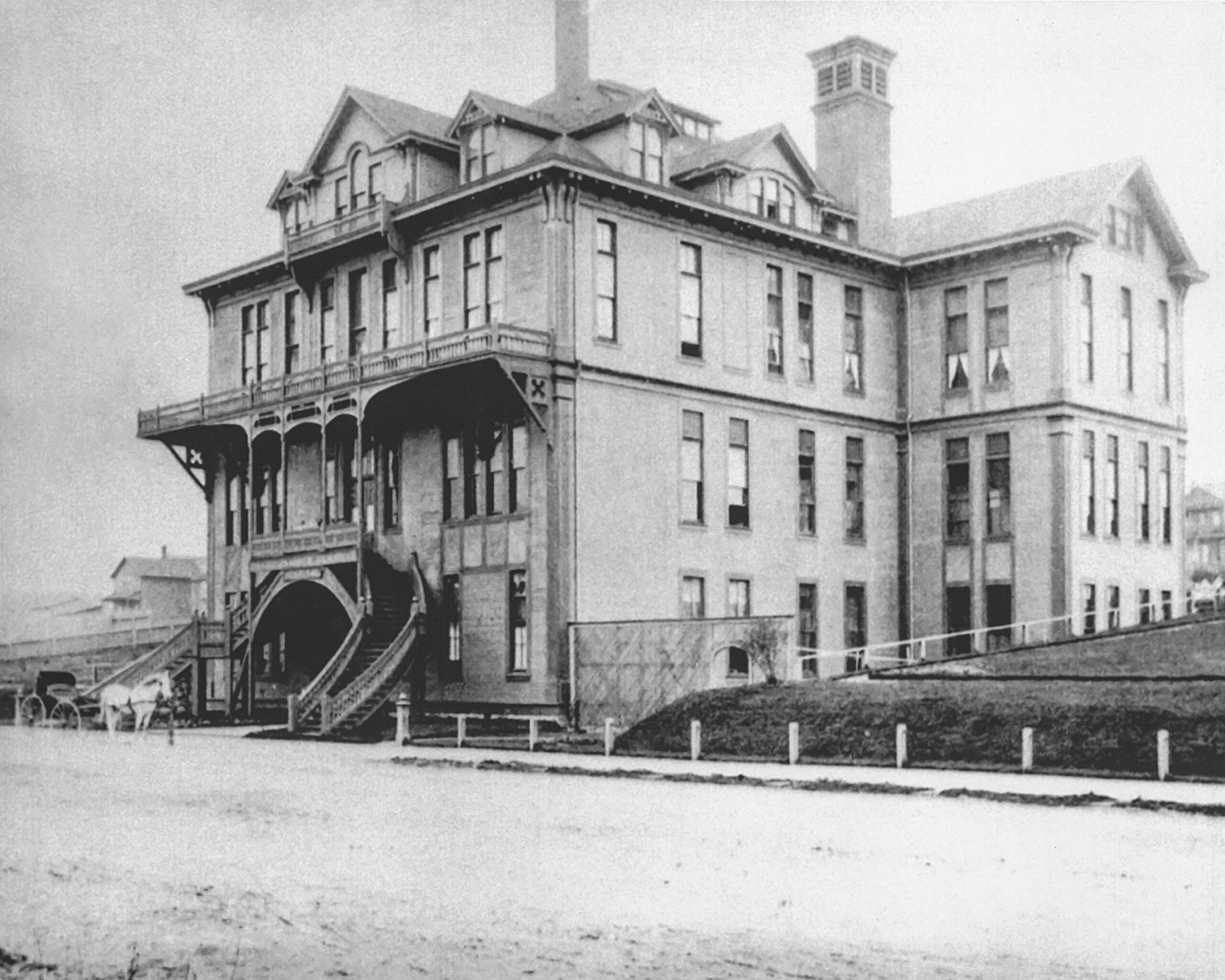
New hospital building makes room for growth in Tacoma
As Tacoma’s population rises, a new Fannie C. Paddock Memorial Hospital opens at 312 S. J Street on a plot of land donated by the Tacoma Land Company, which also donates land for nearby Wright Park.
Though the hospital had electric lighting, staff often worked by candlelight at night to save money. This practice resulted in a fire a year later, which led to the temporary evacuation of 40 patients.
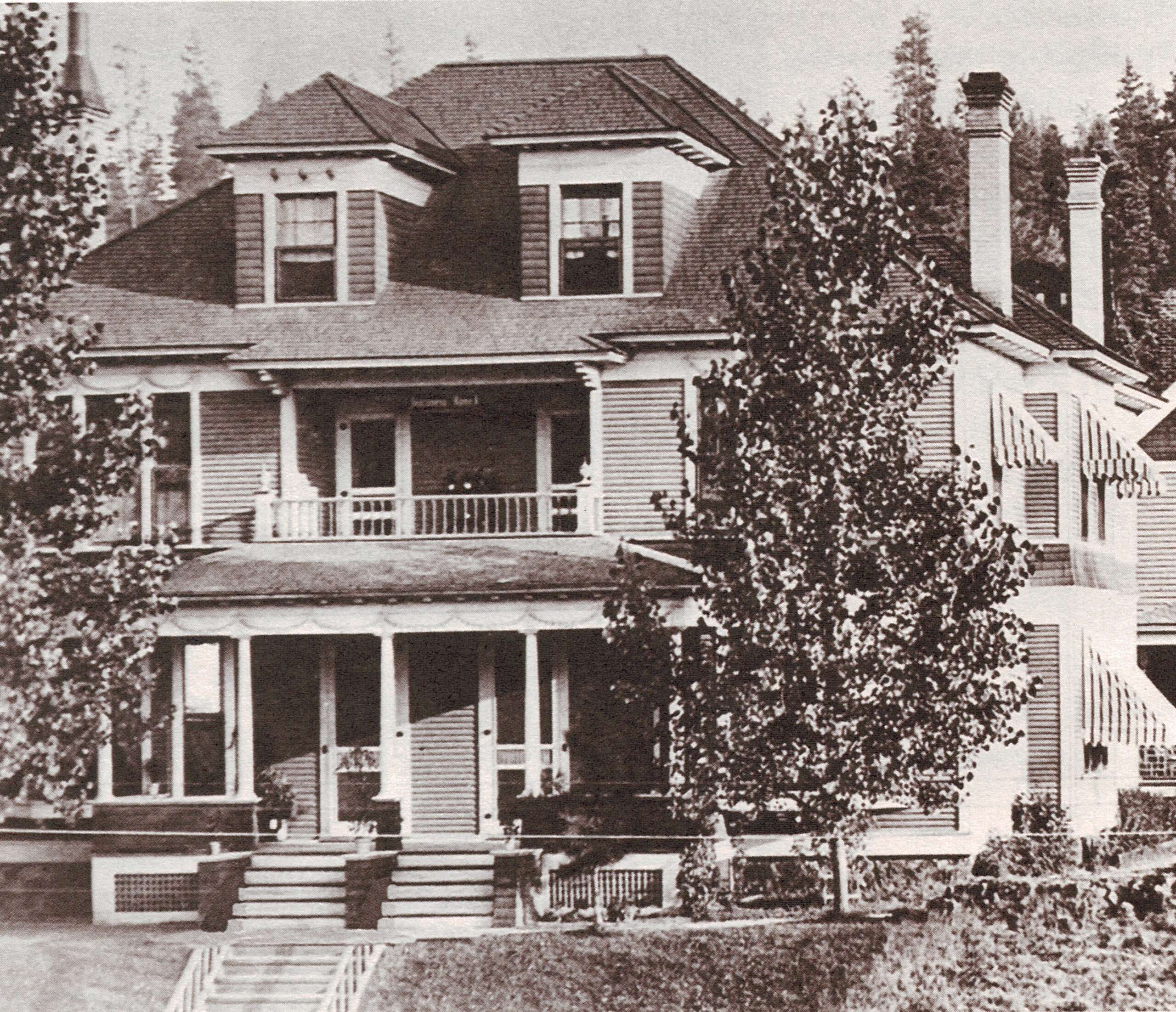
The O’Neills’ generosity paves the way for Deaconess Hospital in Spokane
Spokane, then known as Spokane Falls, is a bustling town that — like Tacoma — lacks sufficient hospital facilities. A donation from Minnie Beard O’Neill and her husband Franklin O’Neill helps establish the Maria Beard Home and Hospital in Spokane. The O’Neills name the hospital after Minnie’s mother, Maria Beard, and dedicate it to the Deaconess Association, a group of female Methodist missionaries.
Over the next century, this 20-room building grows into Deaconess Hospital, a tertiary medical center and one of the largest employers in Spokane.
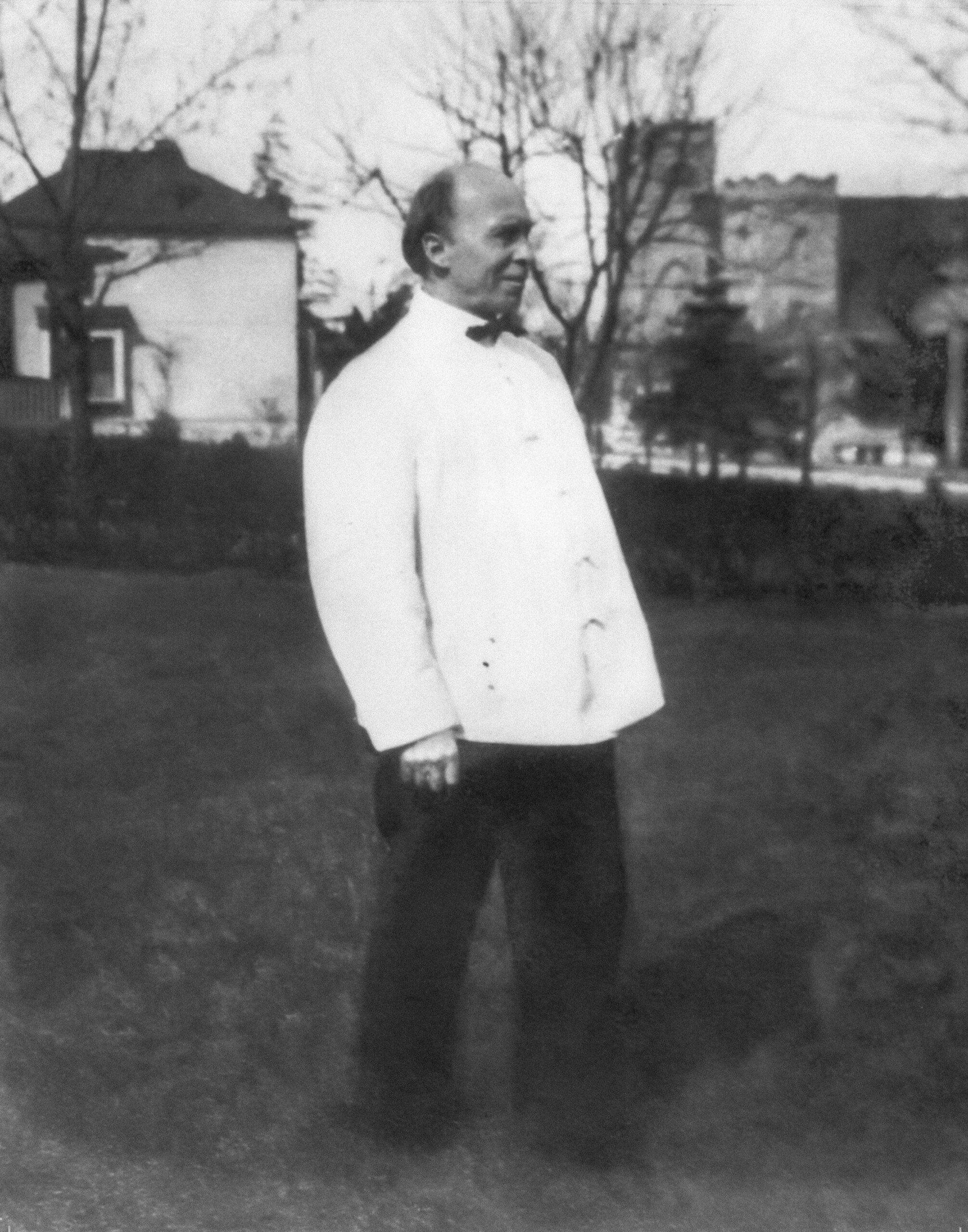
Fannie C. Paddock School of Nursing yields its first graduate
George Smith is the first graduate of the Fannie C. Paddock Memorial Hospital School of Nursing, established in 1895.
Inspired to enter the nursing field after being hospitalized at Fannie C. Paddock, Smith is the first male nurse in Washington. Throughout the school’s 85-year-history, hundreds of nurses are trained for service at Tacoma General and other health care facilities.

School of nursing opens in Spokane
The Maria Beard Home and Hospital, by then known as “Deaconess,” opens a nursing school, admitting six students. Over the years, more than 2,000 nurses would complete the program. The first class (pictured) graduates in 1901.

Fannie C. Paddock Memorial Hospital purchases its first X-ray unit
Five years after German physicist Wilhelm Conrad Röntgen accidentally discovers X-rays, Fannie C. Paddock Memorial Hospital buys its first X-ray unit for $600. Now, physicians have the ability, on a limited basis, to look inside the human body without performing surgery.
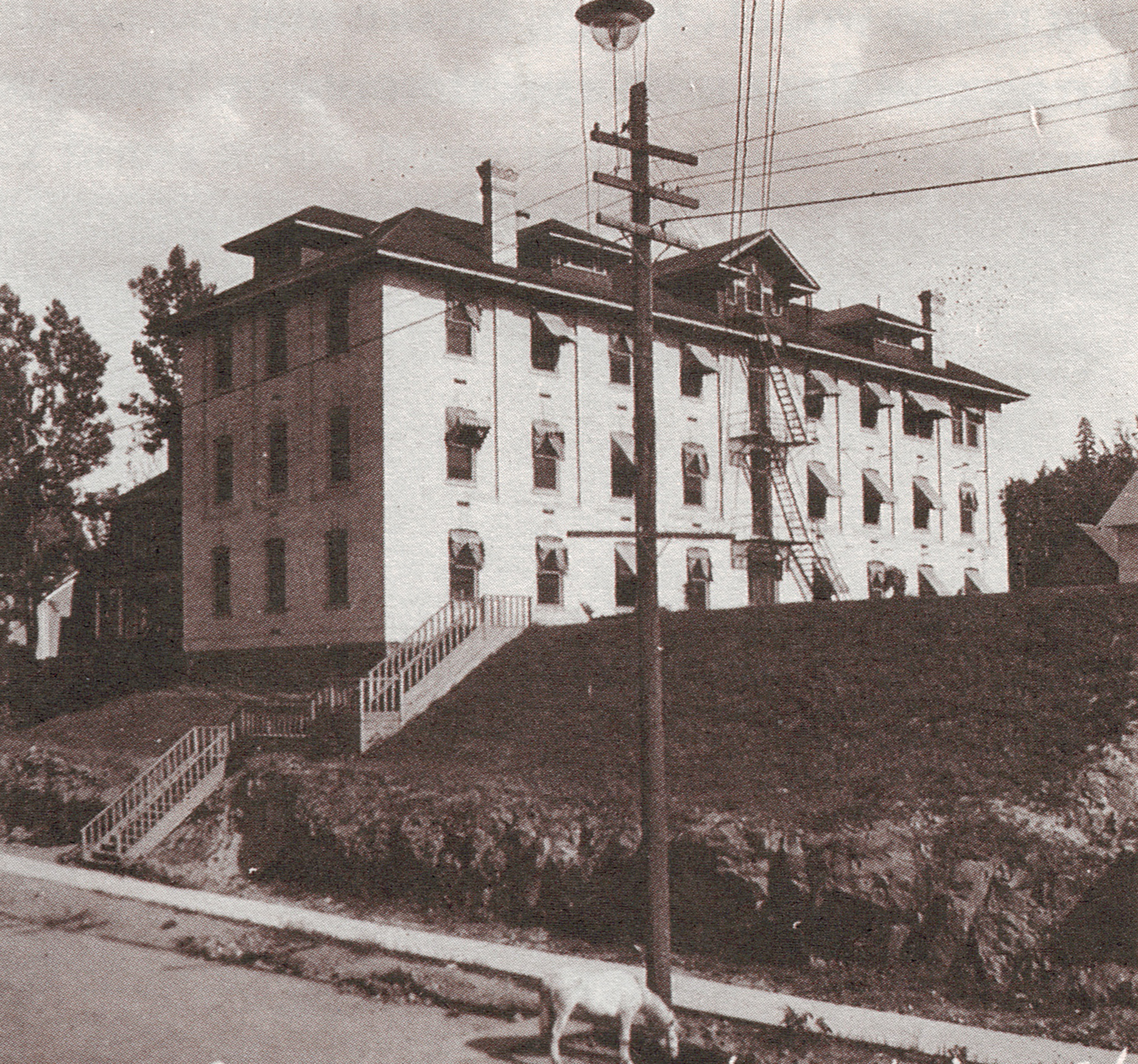
Deaconess erects a new modern building, hires first medical intern
To relieve overcrowding at Deaconess, a new hospital is built on Fourth Avenue in Spokane, opening its doors Oct. 31. The new 50-bed brick building has a hydraulic elevator, two surgery rooms, a sterilizer room and dumbwaiter in the kitchen, among other modern features.
That same year, Dr. Mary MacMillan Rodney becomes the hospital’s first intern. Her duties include delivering anesthetics, providing patient care and attending to emergencies.

Tacoma General officially gets its name
Amid plans for an extensive addition, Fannie C. Paddock Memorial Hospital is renamed Tacoma General Hospital to further associate the hospital with the growing community.

Deaconess acquires new technology
At the request of Dr. George Libby, (pictured) first president of the medical staff at Deaconess, the hospital purchases an X-ray machine for $1,000.
That same year, the hospital laboratory gains access to a microscope, enabling staff to perform studies beyond urinalysis (a test that examines urine in order to identify disease).

Tacoma General moves into a new home
Tacoma General relocates to larger, more modern quarters at 315 S. K Street (part of K Street is now Martin Luther King Jr. Way). The new building features a lead-lined room housing a $10,000 X-ray machine, ice machines and a silent call system where patients who need assistance can switch on an electric light instead of clanging a bell.
Local women organize to bring a children’s hospital to Tacoma
Gertrude E. V. Baker forms the Tacoma Orthopedic Association (TOA) — known today as the Mary Bridge Brigade — with the goal of opening a children’s hospital in Tacoma. At the time, children with orthopedic needs had to be driven from Tacoma to Seattle for treatment because care was not available in Pierce County.
The TOA’s dedication, tireless effort and vision would prove to be instrumental in the founding of Mary Bridge Children’s Hospital.

Two visionary doctors establish Auburn Regional Medical Center
Drs. Owen Taylor and Martin Lacey open Taylor-Lacey Hospital. This 46-bed facility features the area’s first emergency ambulance. While the hospital changes hands and names several times over the coming years, it eventually becomes known as Auburn Medical Center. (Other names include Owen Taylor Hospital, Suburban Hospital and Auburn General.)
Prior to opening the hospital, the physicians provided care out of the Oscar Blomeen House, a private residence in Auburn that still stands today.

Five local physicians come together to found Good Samaritan Hospital
Drs. Raymond Morse, F.F. Cullen, W. Karshner, S.D. Barry and C.H. Alyen use their own funds to open the Puyallup Clinic on Fourth Avenue Northwest in Puyallup. This community hospital goes by different names over the years, including Puyallup Valley Hospital and Puyallup General Hospital, and eventually becomes Good Samaritan Hospital.
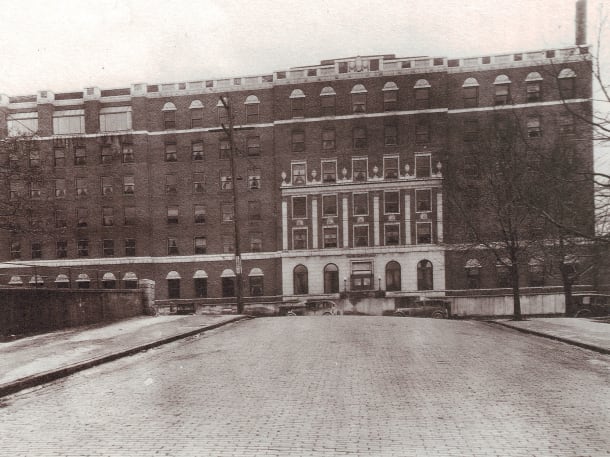
Deaconess expands again
A new 150-bed hospital opens, marking the 27th anniversary of the founding of Deaconess. The American College of Surgeons dubs this building, featuring five operating rooms, a “grade A facility.”

Two nurses establish Allenmore Hospital
Mabel Patterson, RN, opens Washington Minor Hospital, a seven-bed facility specializing in minor surgeries, in the Washington Building on Pacific Avenue in Tacoma. Before the year is out, Patterson decides to return to her home in Canada to work at a new clinic, moving much of the medical equipment and supplies she had purchased and leading to the temporary closure of the hospital.
Henrietta Sowa, RN, who had served as assistant director of nurses at Tacoma General Hospital, takes over management. Within three days of assuming the role, she procures the necessary equipment and reopens the hospital. She successfully guides the hospital through the Great Depression before selling it to a nonprofit corporation in 1936.
After undergoing both name and location changes, Washington Minor Hospital eventually becomes Allenmore Hospital.
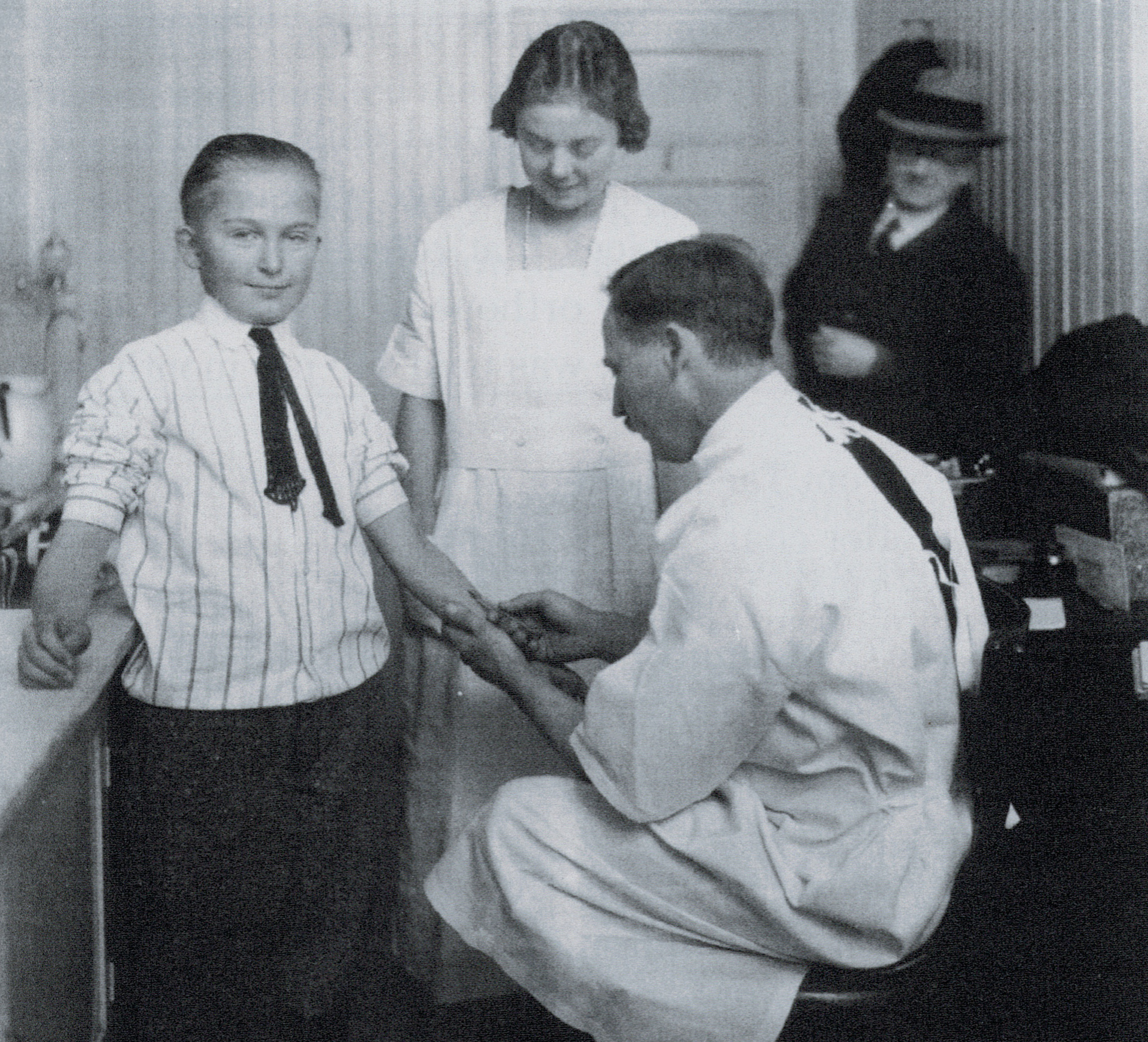
New clinic meets the needs of underserved children
Tacoma General Hospital and the Tacoma Orthopedic Association sponsor an orthopedic clinic for children up to 14 years old whose parents are unable to pay for care. The clinic offers physical therapy and provides corrective braces and shoes, among other services. Many orthopedic physicians donate their time and expertise to help the clinic’s patients.

Deaconess and Tacoma General advance care and technology despite economic strife
Hospitals across the country face enormous financial pressures during the Great Depression. Increasing numbers of patients are unable to pay for services and funding sources become scarce.
However, despite these grave economic challenges, hospitals such as Deaconess find ways to flourish. In 1930, Deaconess becomes the only hospital in Spokane to acquire an oxygen tent, a piece of equipment that helps patients who are experiencing breathing difficulties. That same year a new 32-bed wing opens at the west end of the hospital.
Nearly 300 miles away, Tacoma General finds itself in a similarly difficult financial position. Yet a year later in 1931, the hospital installs its own oxygen therapy equipment, launches a tumor clinic and remodels the X-ray department to treat patients with gastrointestinal concerns.
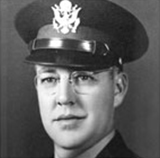
Spokane physician founds Rockwood Clinic
Amid the uncertainty and upheaval of the Great Depression, Spokane native Dr. William W. Robinson establishes Rockwood Clinic Hospital on Spokane’s South Hill. Starting out with 10 patients and a staff of four, Rockwood Clinic becomes one of the Pacific Northwest’s largest outpatient clinics and regional referral centers for multispecialty care.

Washington Minor Hospital, forerunner of Allenmore Hospital, moves to a new location
Washington Minor Hospital moves to a larger home on the fifth floor of the newly constructed Medical Arts Building in Tacoma (now known as the Tacoma Municipal Building). At the time, the hospital has 15 beds and two surgical rooms. A minor surgery costs $10. A major surgery, which includes anesthesia, costs $20.
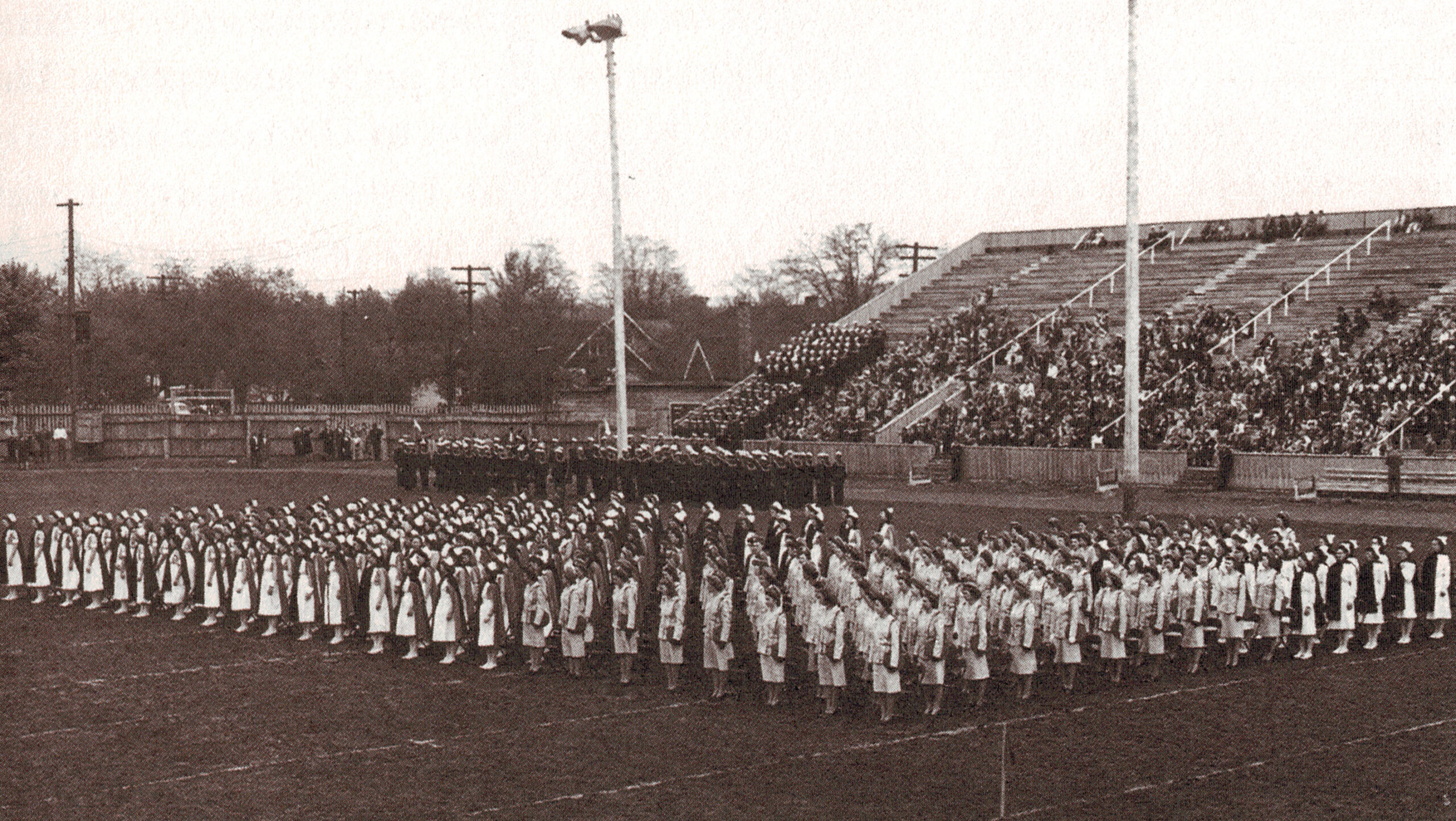
World War II complicates care delivery at home, fosters collaboration
The U.S. officially enters World War II, and doctors and hospital staff across the nation join the war effort. In 1940, over 400 nurses in Spokane joined the armed services (commissioning ceremony pictured).
Those who remain must find creative ways to care for increasing numbers of patients with fewer doctors and nurses. For example, leaders at Deaconess form a joint council with two other hospitals in the region — Sacred Heart and St. Luke’s — to navigate these challenges.
Tacoma General Hospital’s nursing school increases the number of classes per year to help meet the growing need for nurses. Fearing enemy raids, the hospital also imposes blackout conditions. Staff carry small flashlights while conducting rounds, and a kerosene lantern is kept at the chart desk.
Rockwood Clinic also faces hardship — the facility closes when many of its physicians, including its founder, enlist or are drafted.

Five dedicated community members plan a new Yakima hospital
Edwin Mueller, George Martin, Donald Keith, James Bronson and Ernest Kershaw band together with community leaders to build a new hospital in Yakima.
The year prior, Mueller’s 9-year-old daughter passed away from polio at the community’s only hospital. Due to overcrowding in the facility — a significant problem in Yakima Valley at the time — Mueller and his wife couldn’t be by their daughter’s side when she died. Mueller vowed that no other parent would be denied access to their child because of hospital space.
In 1944, Mueller makes good on that vow. He and his colleagues file articles of incorporation for Yakima Valley Memorial Hospital. Four years later, construction of the nonprofit hospital begins.

New blood bank opens at Tacoma General Hospital
With help from the American Red Cross, Tacoma General Hospital establishes a blood bank. While transfusions are difficult and at times risky in this era, they can still save lives.

Rockwood Clinic founder returns, aims to start anew
Dr. William Robinson, Rockwood Clinic’s founder, returns to Spokane after World War II and begins recruiting colleagues to join him in a group practice.

Deaconess staff elect female doctor to leadership position
Dr. Elizabeth White is the first woman to be elected president of the Deaconess medical staff. A graduate of Lewis and Clark High School in Spokane, she had been practicing medicine in the city since 1937.

Yakima Valley Memorial Hospital opens its doors
On June 20, Yakima Valley Memorial Hospital admits its first patient.
Located on seven acres of land just outside Yakima’s city limits (on what is now Tieton Drive), the hospital features 146 beds, 155 employees and more than 200 volunteers. Nearly 15,000 people tour Yakima Valley Memorial during its open-house festivities.
A year later, the hospital launches the first inpatient psychiatric unit in Central Washington.

Good Samaritan Hospital officially gets its name
The Lutheran Home and Welfare Society assumes management of the 42-bed Puyallup General Hospital at the request of the doctors who own that facility. The hospital’s name is officially changed to Good Samaritan Hospital, in honor of the parable about the Good Samaritan from the Gospel of St. Luke.
With funding from several local benefactors, the Lutheran Society also opens Lutheran Minor Hospital that same year, a 76-bed, three-story facility (pictured) that eventually merges with Good Samaritan Hospital.

Good Samaritan Hospital begins first-of-its-kind program in Washington
Good Samaritan Hospital begins offering physical rehabilitation programs as the first privately operated rehab center in the state, which will establish the hospital’s reputation as one of the finest rehab providers in the Pacific Northwest.
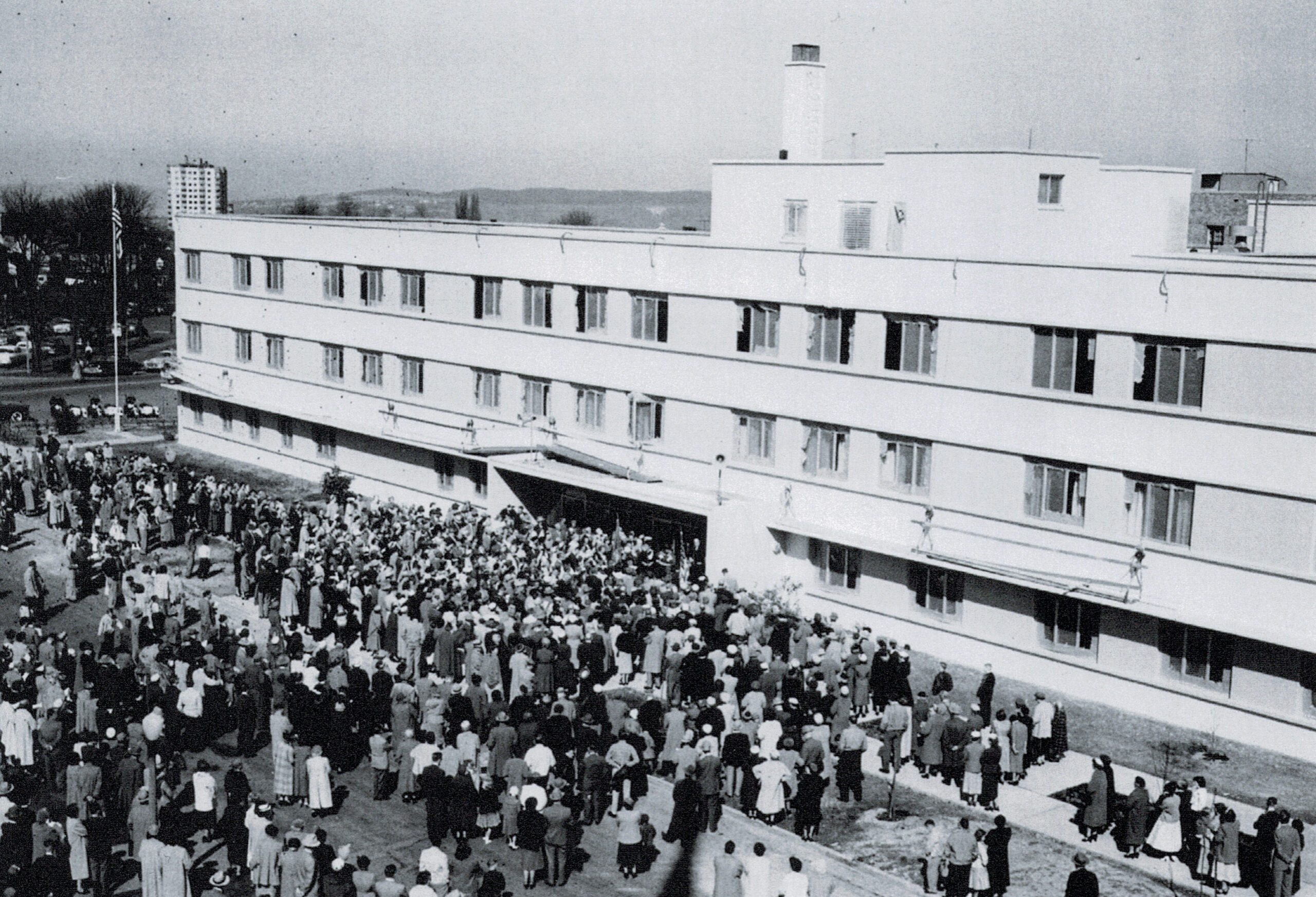
The long-awaited Mary Bridge Children’s opens its doors
Mary Bridge Children’s Hospital opens in Tacoma. Construction began a year earlier, with TV host Ed Sullivan laying the cornerstone of the building. Approximately 3,000 people attend the dedication ceremony (pictured).
Funding from the Tacoma Orthopedic Association and the estates of William R. Rust and Albert W. Bridge, MD, were critical in establishing the hospital. Dr. Bridge requested the hospital be named after his mother, Mary Bridge, for all the sacrifices she made to help him through medical school.

Auburn General offers array of modern features, gets new owner
The Taylor-Lacey Hospital, now known as Auburn General, is purchased by the Stewards Foundation, a nonprofit Christian organization.
By 1956, Auburn General has 13 doctors, a nursery and maternity ward as well as new X-ray and pathology laboratories, making it one of the finest hospitals of its size in the Northwest. At the time, the hospital is the only building in Auburn with an elevator. The Stewards Foundation operates the hospital for 25 years, investing in a number of upgrades throughout its tenure.

Good Samaritan Hospital merges with Lutheran Minor Hospital
The fire department and public health authorities direct leadership at Good Samaritan to acquire a more adequate building for its expanding programs. The Lutheran Home and Welfare Society decides to consolidate Good Samaritan with Lutheran Minor Hospital, another facility they owned that primarily cared for older adults.
The aging Good Samaritan building is closed, and Lutheran Minor Hospital undergoes a renovation. A year later, a public open house celebrates the refurbished building, which goes by Good Samaritan Hospital.

Rockwood Clinic gets a new home
The growing Rockwood Clinic moves to a larger facility on Eighth Avenue, an area that becomes the medical center of the Inland Northwest.

Mary Bridge Children's experiences a surgical first
Dr. Thomas Murphy performs the first open-heart surgery at Mary Bridge Children’s. At the time, the procedure is considered new and innovative.
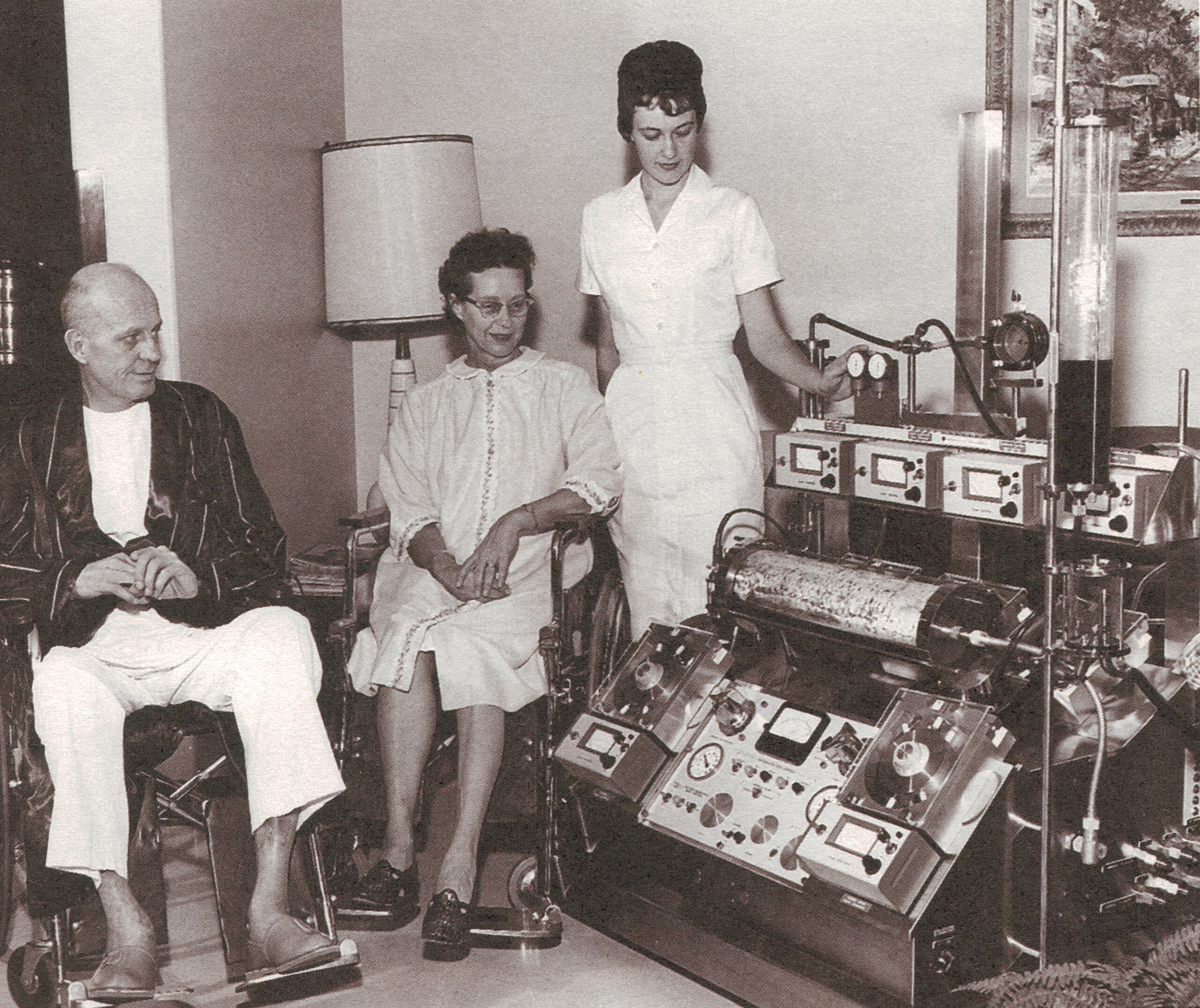
Deaconess Hospital tackles open-heart surgery
Dr. John Sonneland and his medical team perform the first open-heart procedure at Deaconess. Shortly thereafter, Deaconess acquires a new heart-lung machine (pictured) that could take over for the heart briefly during surgery.

Auburn General expands
Auburn Medical Center, known as Auburn General at the time, undergoes a significant renovation. The hospital’s 46 beds are increased to 66 and a new wing is added, housing an obstetrical department, a nursery for newborns, as well as radiological services.
This expansion is followed by another one five years later that adds a new surgical department, emergency services and more.

Allenmore Hospital relocates, gets its name
Washington Minor Hospital, by then known as the Medical Arts Hospital, relocates near South 19th Street and Union Avenue in Tacoma.
The new 80,700-square-foot facility houses six dentists and 27 physicians — and is renamed Allenmore Hospital and Medical Center. It’s named after businessmen Sam Allen and William Dinsmore, who developed a golf course at the site in 1920.

Deaconess launches innovative cardiopulmonary program
Deaconess launches the first cardiopulmonary school in the U.S. to train technicians to operate cardiac equipment and perform data analysis. Graduates of the two-year course receive an associate degree from Spokane Community College. The program complements other Deaconess-affiliated programs that provide training for medical record technicians, nursing aids and licensed practical nurses.
Sharma Anderson, RN, (pictured) sits at the controls of the first cardiac care unit monitoring station at Deaconess Hospital.

Good Samaritan’s Children’s Therapy Unit opens its doors
Occupational therapist Linda Yates launches the Children’s Therapy Unit (CTU) at Good Samaritan Hospital and serves as the director for four decades. This nationally renowned program provides a variety of services, such as physical, occupational and speech therapy, for children with developmental concerns.
The opening of the CTU comes on the heels of a three-story addition to Good Samaritan Hospital in 1965 that enables its highly acclaimed adult rehabilitation center to accept patients from across the Pacific Northwest and Alaska.
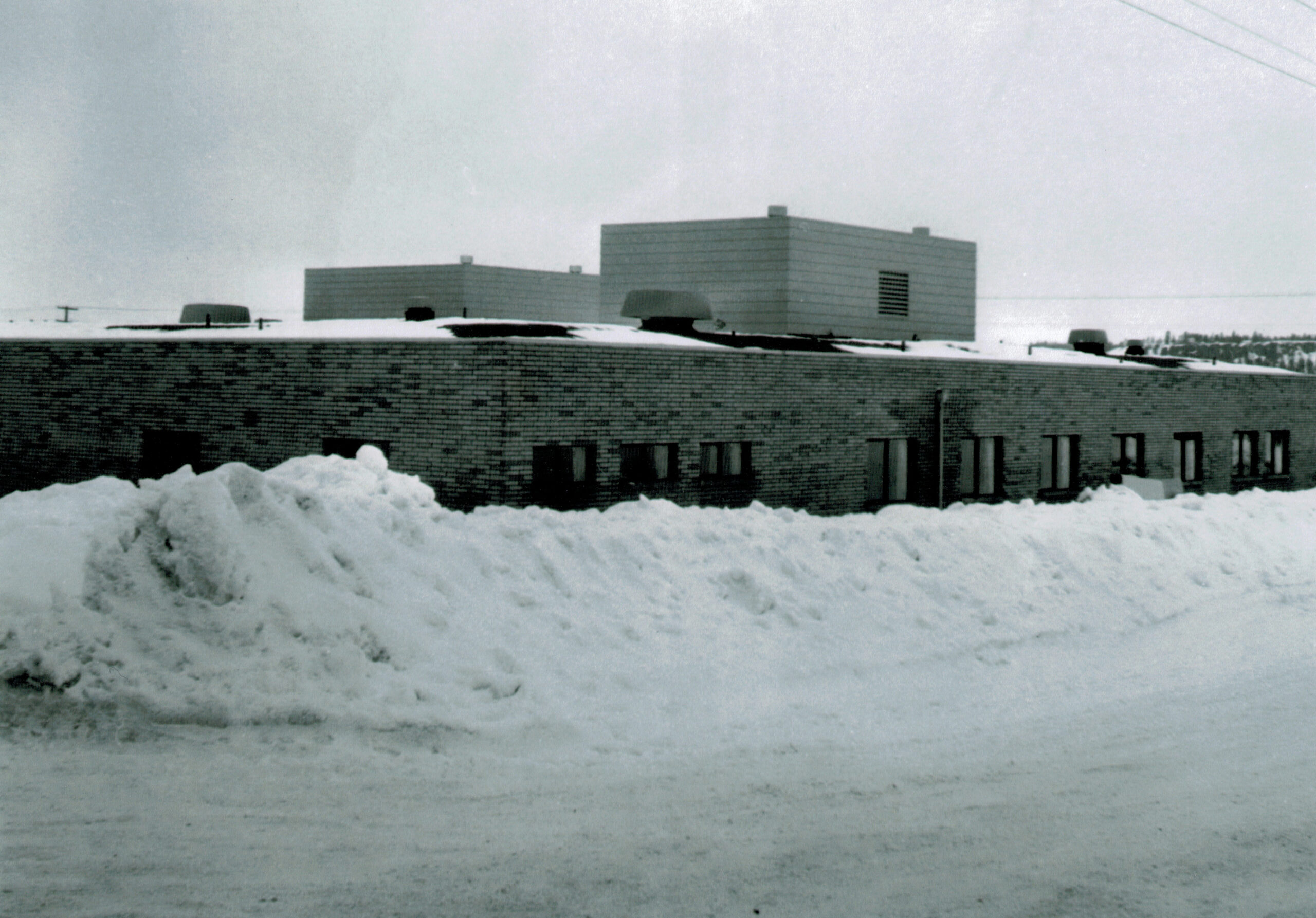
New Spokane Valley Hospital opens during major snowstorm
Spokane Valley General Hospital opens its doors on Jan. 26 amid a snowstorm that made roads impassable. A Spokesman Review article states that staff at this 95-bed hospital didn’t treat their first patients until Feb. 6.
The hospital has the only emergency room in Spokane Valley, and later that year becomes the first hospital in Spokane to staff its emergency room around the clock with physicians. A year later, it becomes the first hospital in the area to open a medical helicopter pad. Eventually, Spokane Valley General Hospital becomes known as Valley Hospital.

Auburn General celebrates 50 years of service
The Auburn Globe-News, no longer in publication, recognizes Auburn General’s 50 years of service to the community. By then, Auburn General was a modern 94-bed institution. A few years later, the hospital would embark on a $3.2 million improvement program that doubles the hospital’s space and adds 30 new beds.

Yakima Valley Memorial breaks ground on a new addition
The Yakima-Herald Republic reports that Beverly Dawson Mattoon, the first person born at the hospital, turns over the first shovel of dirt at the groundbreaking ceremony for a new two-story addition. The expansion includes an emergency department, a surgery department and an intensive care unit, among other facilities.
This event kicks off a decade of milestones for the hospital, including its designation as the regional Poison Control Center — which serves Yakima, Klickitat and Kittitas counties — and the launch of the first mammography service in Central Washington.

Good Samaritan innovates and continues expansion
To meet growing community needs, Good Samaritan Hospital creates a home-health agency, one of the first in Washington; establishes the state’s first hospital-based mental health center; and completes a rooftop helipad.
This growth follows a legacy of expansion in the late 1960s that increased capacity and added a coronary care unit as well as a $2 million diagnostic and treatment wing.

Deaconess Hospital completes a new wing with a heliport
A new four-story addition at Deaconess Hospital, then known as the J. Webster Hancox Wing, includes a cardiac care unit, a radiology department, new emergency and intensive care units, a 32-bed intermediate care unit, and a heliport for military and private air ambulances. Completion of the wing, named after a former board chairperson, expands the hospital’s ability to provide specialized care.

Mary Bridge Children's receives a new name
To reflect its expanded service offerings, the hospital is renamed Mary Bridge Children’s Hospital & Health Center. Mary Bridge Children’s services are divided into four areas: the hospital, the child development and learning center, maternal and child services, and the speech and hearing center. Two years later, a new speech and hearing center opens across the street from the main hospital.

Allenmore innovates and grows
Allenmore Hospital finalizes an expansion that increases its number of beds from 50 to 156. The renovations include a 10-bed intensive care and coronary care unit, as well as a 15-bed specialty care unit.
By then, the hospital had also purchased a four-million-volt linear accelerator for the treatment of cancer, making it the first hospital in Tacoma and only the fourth in the state to acquire this new piece of high-tech equipment.

Tacoma General enhances its capacity for patient care
Tacoma General completes construction of a new six-story patient care pavilion. Spanning J Street, the new addition features 221 beds, most of them private patient rooms, and adds 156,500 square feet to the existing hospital. The layout of the upper floors connects patient corridors and puts nurses at the center, enabling them to reach any patient area quickly.

Shifting trends in nurse education lead to closure of programs
The Tacoma General Hospital School of Nursing (TGHSON) — the first to be established in the state of Washington — and the Deaconess Hospital School of Nursing both shutter their doors. The closures are a response to the high costs of supporting these programs and the shift toward educating nurses in academic institutions rather than hospitals.
While the schools no longer exist, alumnae of TGHSON create an endowment fund that provides scholarships for nurses of all levels to support their continued education and leadership development.

Tacoma-based hospitals team up, paving the way for MultiCare
On Jan. 1, Tacoma General Hospital joins forces with Mary Bridge Children’s Hospital & Health Center and Doctors Hospital of Tacoma — a 70-bed facility dating back to 1946 — under the name Consolidated Hospitals. The goal of this alliance is to reduce duplication of services, pool resources and improve care for the community.
Each hospital brings unique strengths to the partnership: Tacoma General Hospital is widely known for its comprehensive oncology program and cardiology services. Mary Bridge Children’s offers a range of services for patients from birth to 18 years of age, and staffs a poison information center as well as a speech and hearing center. Doctors Hospital is a leader in ophthalmology, surgery and geriatric services.

New oncology unit opens, launching era of advances for Yakima
Yakima Valley Memorial Hospital opens Central Washington’s first inpatient oncology unit, heralding a decade of expansion and innovation.
During the 1980s, the hospital opens the first neonatal intensive care unit in the region, launches occupational health services, expands its radiation therapy program and begins a multiyear renovation project. In response to employee needs, the hospital also opens a child care center.

Allenmore Hospital receives a new name following new ownership
Allenmore Hospital becomes known as Humana Tacoma Hospital. The name change reflects Humana’s acquisition of Allenmore in 1978.

Consolidated Hospitals officially becomes MultiCare
Consolidated Hospitals — representing Tacoma General Hospital, Mary Bridge Children’s Hospital & Health Center and Doctors Hospital — becomes known as MultiCare Medical Center. Leaders chose “MultiCare” to reflect a multifaceted yet unified health care delivery model. At the time, the three-hospital organization has 600 participating doctors and 2,000 staff members.
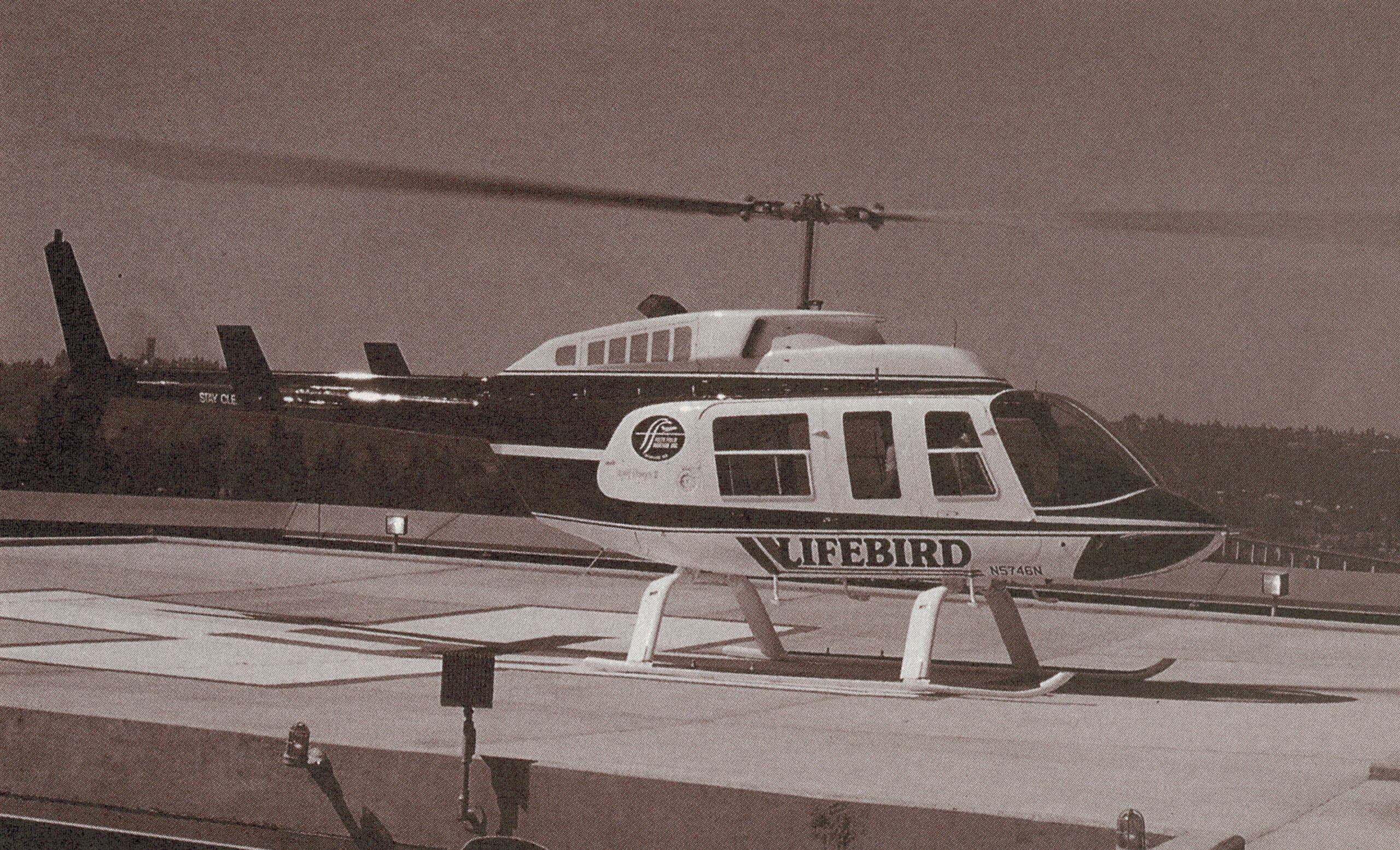
A new name and a new era for Deaconess
Deaconess Hospital becomes known as Deaconess Medical Center – Spokane, just one of many changes the hospital experiences in the 1980s.
During this decade, Deaconess builds a new patient tower, opens a pediatric intensive care unit and starts the first hospital-based air ambulance program in the state, called Lifebird. Deaconess also makes headlines as the birthplace of the first “test-tube baby” (a baby conceived via in vitro fertilization) born in the state of Washington.

Valley Hospital grows and gets a new name
St. Luke’s Hospital in Spokane, which purchased Spokane Valley General Hospital in 1980, changes the hospital’s name to Valley Hospital and Medical Center to better reflect the role of the health care facility in the community. That same year, Valley Sports Medicine opens as part of the physical medicine department.
During the 1980s, the hospital also completes a three-story addition, implements new diagnostic imaging services and establishes an anesthesia outreach program that provides anesthesia services to health care facilities throughout the Pacific Northwest.

Women’s rights advocate co-founds Capital Medical Center
A small group of physicians opens Black Hills Community Hospital in Olympia. Among this group is Angela Bowen, MD, a longtime Olympia resident, medical researcher and women’s rights advocate.
Prior to its founding, Olympia was a one-hospital city, and Dr. Bowen — along with her co-founders — staunchly believed residents deserved a second choice. Black Hills Community Hospital eventually becomes known as Capital Medical Center.
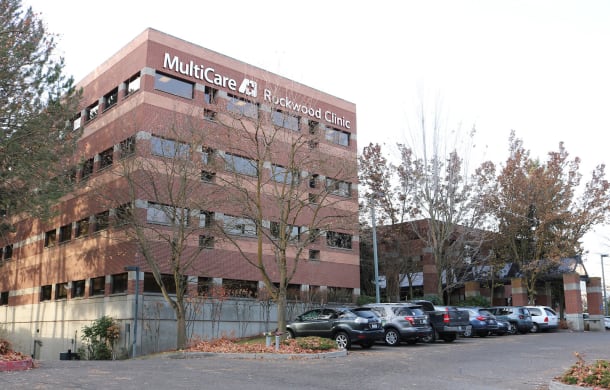
Rockwood Clinic gets a new home
Rockwood Clinic moves into a new 103,000-square-foot facility on East Fifth Avenue in Spokane. This building continues to serve as the hub of Rockwood Clinic, offering primary care, urgent care and specialty care.

Mary Bridge Children's inpatient services relocate to Tacoma General
Mary Bridge Children’s inpatient services move to a new wing at Tacoma General Hospital. That year, the emergency department treats nearly 20,000 children, the highest volume pediatric emergency department in Washington.

MultiCare says farewell to Doctors Hospital
Following the transition to a short-term surgery center, Doctors Hospital closes its doors due to shrinking business and increased competition. Referred to as “the city’s best-kept secret” by staff, the hospital was known for its eye care, housing the Pierce County Eye Bank from 1960-1973.
The building, located on South Fawcett Avenue in Tacoma, remains in use at MultiCare for several years, at one point serving as an inpatient chemical dependency treatment unit, until the building is sold in 2022.

MultiCare Health system is born, Allenmore Hospital joins the system
MultiCare leaders change the name of the organization to MultiCare Health System. That same year the organization acquires Humana Tacoma Hospital and restores the Allenmore name.

MultiCare opens the Gig Harbor Urgent Care Clinic
The Gig Harbor Urgent Care Clinic, MultiCare’s first off-campus expansion, opens its doors. The clinic creates an essential link between Mary Bridge Children’s Hospital & Health Center and pediatric care in the local community.
Over time, it grows into a medical park that includes an ambulatory surgery center, a sleep disorders center, a women’s health and wellness center, and a regional cancer center.

Capital Medical Center gets its name
Black Hills Community Hospital is renamed Capital Medical Center.
However, the ’90s brought more than just a name change. Throughout this decade, Capital Medical Center undergoes significant growth, opening birthing suites for expectant parents, an ambulatory care center and the Physician’s Pavilion, which features 65,000 square feet of medical office space.

Yakima Valley Memorial co-launches family practice residency program
In an effort to bring more primary care physicians to the community, Yakima Valley Memorial Hospital jointly sponsors a family practice residency program with the University of Washington and St. Elizabeth (now closed). Today, this program is known as the Central Washington Family Medicine residency.
Other milestones for Yakima Valley Memorial in the early to mid-90s include the launch of a diabetes education center, a cardiac catheterization lab and home health services. In 1996, the hospital becomes a Level III designated trauma center.

MultiCare founds Covington Clinic
MultiCare opens Covington Clinic, one of the first medical clinics in Covington and Washington state’s first comprehensive outpatient medical center, urgent care and physician office facility.
It later becomes known as MultiCare Covington Medical Center.

MultiCare expands further into King and Pierce counties
MultiCare opens outpatient medical centers, urgent care clinics and physician offices in Kent, Auburn and Eatonville to meet the needs of patients where they live.
Over the next three decades, MultiCare adds more than 200 primary, specialty and urgent care clinics across the Puget Sound and Inland Northwest.

Mary Bridge Children's certified for pediatric trauma care
Mary Bridge Children’s Hospital & Health Center is designated as a Level II trauma center for children, making it the only emergency department in Western Washington designated for pediatric trauma care at the time.

Deaconess Health & Education Center opens
The six-story Deaconess Health & Education Center opens in December. The building houses comprehensive cancer services for children and adults, an outpatient surgery center, an education center with public access and a pharmacy, among other services.
The Health and Education Center, which undergoes a name change in later years, isn’t the only major milestone of the ’90s for Deaconess. During this time, the hospital opens a new neuroscience center and a women’s clinic. The Joint Commission ranks Deaconess among the top 10 percent of hospitals in the nation for patient advocacy and care.

Yakima Valley Memorial opens Children’s Village
Yakima Valley Memorial Hospital joins 14 other local agencies to open Children’s Village. This facility provides integrated health care, therapy and educational services for children of all ages with developmental disabilities, such as autism spectrum disorder and Down syndrome. With multiple specialists working together under one roof, care is more accessible to families.
Within two decades’ time, Children’s Village will treat about 5,000 patients a year, a fivefold increase, reports the Yakima Herald-Republic.

MultiCare appoints first woman, first nurse as CEO
Diane Cecchettini, RN, becomes the first woman and first nurse to serve as CEO of MultiCare. During her 15-year tenure as CEO, Cecchettini pioneers MultiCare’s early adoption of a comprehensive electronic medical record system.

Good Samaritan opens new facility, expands its services
Good Samaritan Hospital opens the Dr. Donald and Beret Mott Children’s Center to house its acclaimed Children’s Therapy Unit programs.
The early 2000s brought other significant milestones for Good Samaritan: the opening of a cardiac catheterization lab, a new rehabilitation center and a state-of-the-art family birth center. During this time, Good Samaritan becomes the first hospital in Pierce County to offer positron emission tomography (PET), an advanced diagnostic imaging tool.

Yakima Valley Memorial opens state-of-the-art cancer center
Yakima Valley Memorial Hospital has been at the forefront of cancer care in Central Washington, going back to the 1960s, when it opened the area’s first cobalt therapy (radiation therapy) unit.
In 2000, the hospital continues on its trailblazing path by opening North Star Lodge, an outpatient cancer center that provides a comprehensive suite of services, including medical oncology, radiation oncology, genetic counseling, clinical trials and more.

Tacoma organizations partner to open new trauma center
The Level II Tacoma Trauma Center opens, a joint venture between Tacoma General Hospital, St. Joseph Medical Center and Madigan Army Medical Center.
Prior to the opening of the center, providing trauma care was a challenge for Tacoma hospitals due to its high cost. By 1995, adult trauma victims in Tacoma and the surrounding area were airlifted to Seattle, which proved to be costly, time-consuming and hard on families. An influx of federal funding and collaboration made it possible for trauma care to return to Tacoma in 2000.
In its first year of operation, the trauma center treats four times the number of patients expected.

Auburn Regional Hospital completes new addition
Auburn Regional Hospital builds a four-story patient tower on the corner of North Division and First Street in Auburn. The new addition includes inpatient and outpatient surgery centers, a new family birth center, 51 new medical-surgical beds, an expanded emergency services department and more.

Valley Hospital undergoes a major expansion
Valley Hospital completes an addition that increases the building’s size by 40 percent. The expansion makes room for an MRI machine, a cardiac catheter lab, new private patient rooms and educational space.

Mary Bridge Children's celebrates 50 years
The new Mary Bridge Children’s Health Center opens in celebration of Mary Bridge Children’s 50th anniversary. The new clinic is the result of a $15 million campaign. The mayor of Tacoma recognizes the Tacoma Orthopedic Association for their integral role in fundraising for the clinic.
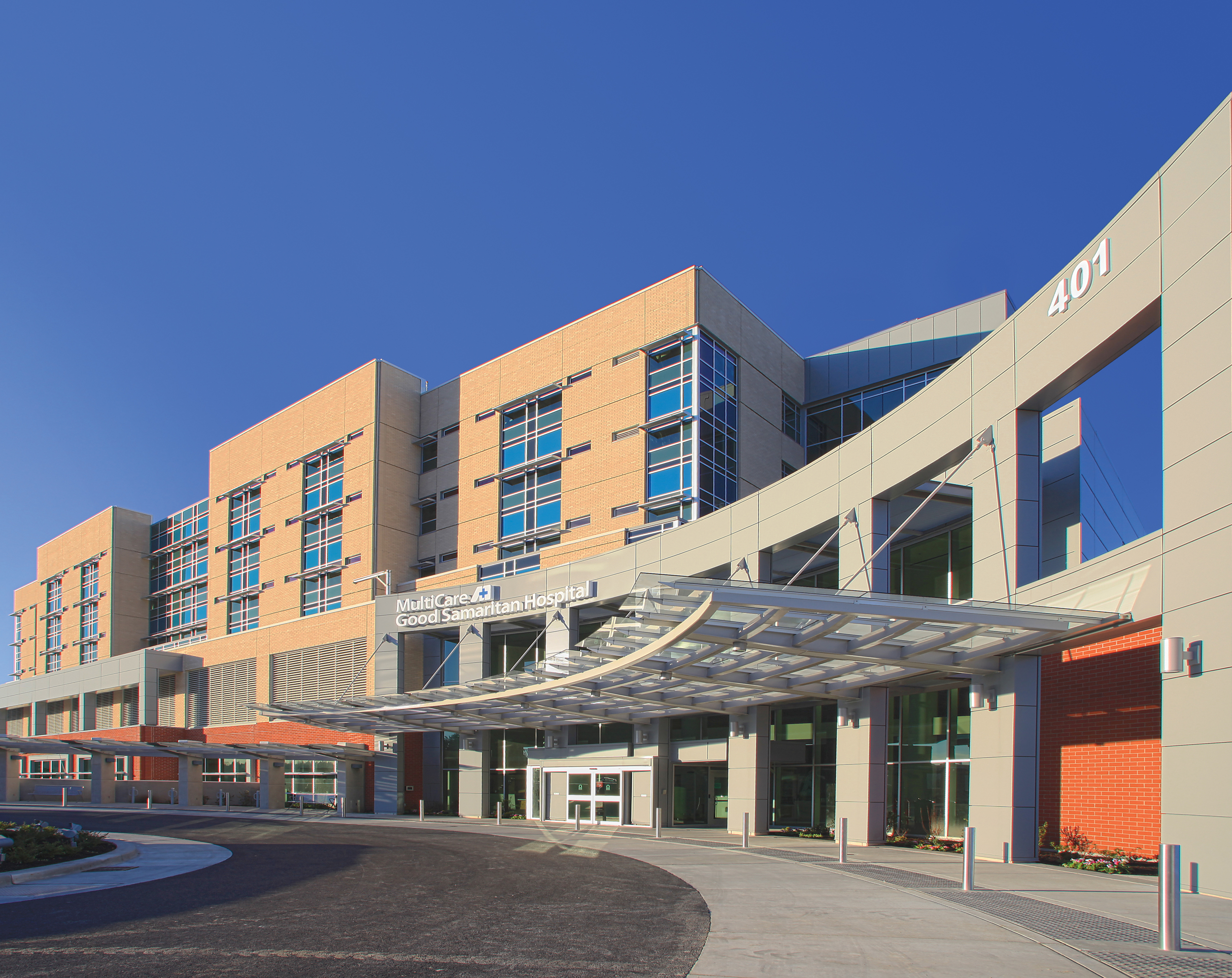
Good Samaritan joins MultiCare Health System
A year after Good Samaritan opens the Dr. Richard C. Ostenson Cancer Center, the hospital completes an affiliation with MultiCare.
One of the benefits of this partnership is broadening access to health care for the community. In 2008, Mary Bridge Children’s opens a pediatric care unit at Good Samaritan, bringing specialized services and treatment closer to home for East Pierce County children. By then, plans are also underway to expand and modernize Good Samaritan’s facilities, transforming it into a regional medical center.

MultiCare co-founds innovative breast imaging center
MultiCare Health System, CHI Franciscan Health (now Virginia Mason Franciscan Health) and TRA Medical Imaging join together to open the Carol Milgard Breast Center.
Named in honor of Carol Milgard, a long-time Tacoma resident, philanthropist and 30-year-breast cancer survivor, the center becomes the first imaging facility in Pierce County to offer 3D mammography, which improves the detection of breast cancer up to 30 percent. The center is also known for its commitment to serving all patients, regardless of their ability to pay. In its first five years, the center provides more than $2.3 million in services to those who are medically underserved or uninsured.

MultiCare completes launch of its electronic medical record system
MultiCare’s electronic medical record system goes live in MultiCare Good Samaritan Hospital. Now all four of MultiCare’s hospitals are electronically linked to each other and nearly 100 other sites of care throughout Western Washington.
This endeavor was the culmination of a $140 million investment and more than a decade’s worth of teamwork, dedication and problem-solving. As a result, a national survey ranks MultiCare in the top 1.8 percent of the most integrated health systems in the U.S.

MultiCare launches research institute
The MultiCare Institute for Research and Innovation is established to house the health system’s research efforts in a single program.
The Research Institute becomes the largest community-based, non-academic research center in the Pacific Northwest, offering research opportunities in the Puget Sound. In later years, the Research Institute grows to offer research opportunities in the Inland Northwest.
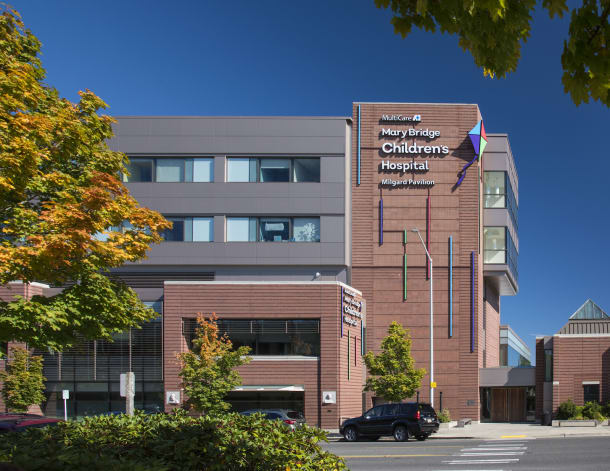
MultiCare opens Milgard Pavilion
To meet increased demand for services, MultiCare expands Tacoma General and adds the Milgard Pavilion next to the hospital. The four-story pavilion is a leading-edge facility that houses new emergency departments for Tacoma General and Mary Bridge Children’s, as well as the MultiCare Regional Cancer Center.

Capital Medical Center opens new facilities
Capital Medical Center opens an imaging center, an outpatient clinic and an advanced wound center to better serve the community. The following year the hospital receives the Joint Commission’s Gold Seal of Approval for knee and hip replacement and spine surgery.
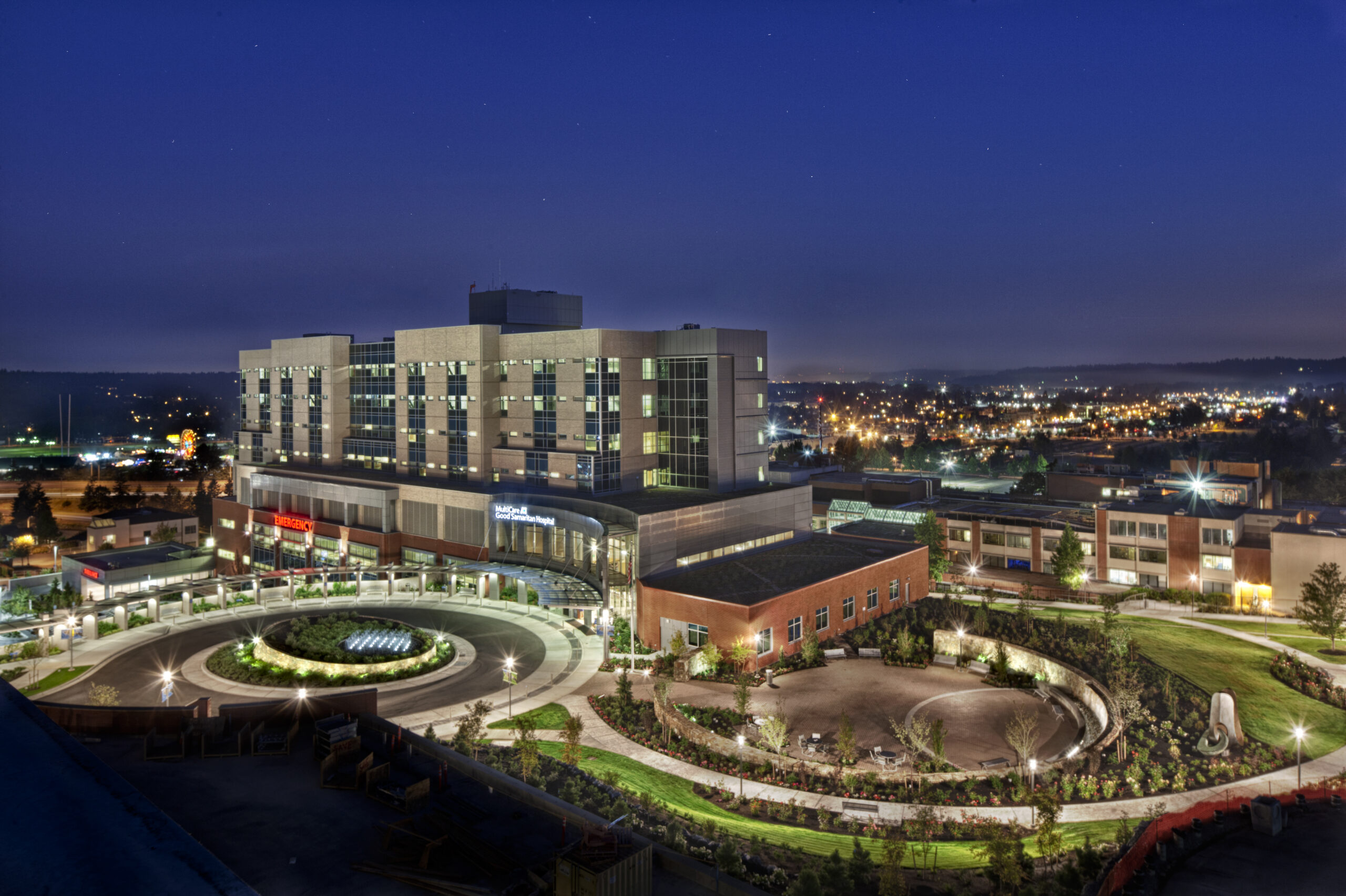
Good Samaritan Hospital completes expansion
In February, the 357,000-square-foot Dally Tower opens its doors. The nine-story tower includes 78 private patient rooms, technologically advanced surgery suites, a new emergency department, diagnostic imaging and more. Dally Tower is the first inpatient hospital facility in the state of Washington to receive a Leadership in Energy and Environmental Design (LEED) Gold Certification from the U.S. Green Building Council for its sustainable design and features.
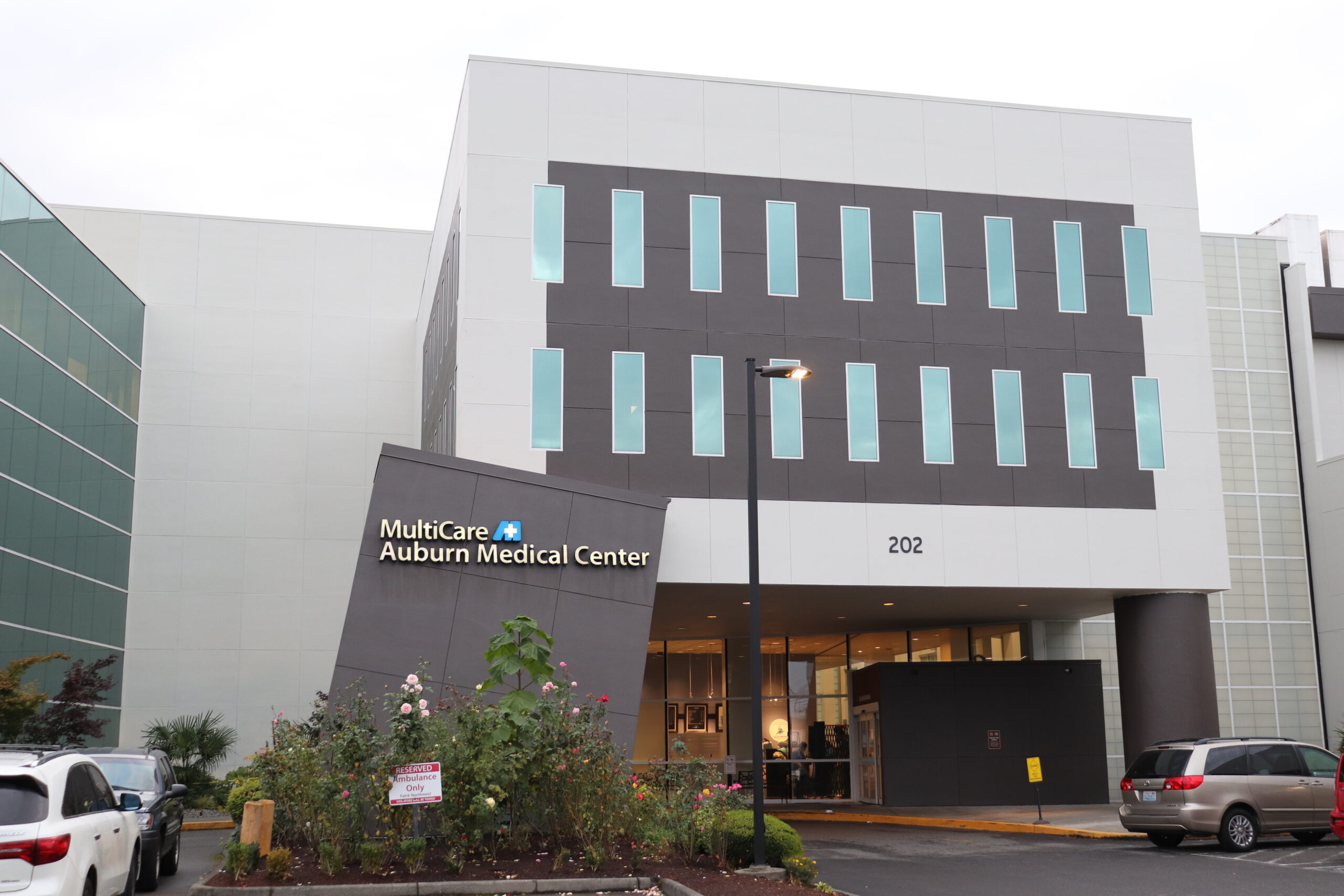
Auburn Regional Medical Center joins MultiCare
MultiCare purchases Auburn Regional Medical Center from Universal Health Services. The newly named MultiCare Auburn Medical Center becomes the fifth hospital in the health system.

Covington Medical Center adds a free-standing emergency department
To meet the needs of the growing population, Covington Medical Center opens a 24,000-square-foot emergency department next to its main building. The department goes on to win awards from the Studer Group for excellence in patient care in 2012 and 2013.

MultiCare establishes an accountable care organization
MultiCare launches its own accountable care organization (ACO), MultiCare Connected Care, LLC.
An ACO is a network of hospitals, doctors and other health professionals who assume responsibility for a specific population of patients and collaborate on their care, with the goal of lowering costs and improving outcomes. ACOs are a value-driven alternative to the traditional fee-for-service model of care.

Community Partnership Fund launches to support local nonprofits, improve quality of life
MultiCare creates the Community Partnership Fund to provide financial support to select nonprofit organizations in Pierce, King, Thurston and Kitsap counties. In 2018, the fund expands to support organizations in the Inland Northwest region.

MultiCare takes the lead in providing urgent care services
MultiCare opens a new line of retail urgent care clinics, MultiCare Indigo Urgent Care across Pierce, King, Snohomish and Thurston counties. That same year, Immediate Clinic’s 14 locations in the Puget Sound area become part of MultiCare’s network of urgent care clinics — making MultiCare the largest provider of urgent care services in the state.
In 2018, Indigo Urgent Care expands to the Inland Northwest region.

Deaconess Hospital opens Spokane’s first free-standing emergency department
The Deaconess North Emergency Center, the first free-standing emergency department in Spokane, opens to the public. Featuring a diagnostic imaging department and lab, the facility is intended to ease overcrowding at the hospital’s main emergency department in addition to better serving residents in the northern part of the city.

MultiCare launches Pulse Heart Institute to improve cardiovascular care
MultiCare partners with the Cardiac Study Center to open Pulse Heart Institute. A physician-led organization, Pulse improves access to care for patients with heart-related conditions, streamlines the referral-to-treatment process and explores new treatment options through heart and vascular research.
At the time Pulse Heart Institute opens, heart disease is the second-leading cause of death in Pierce County and Washington state.
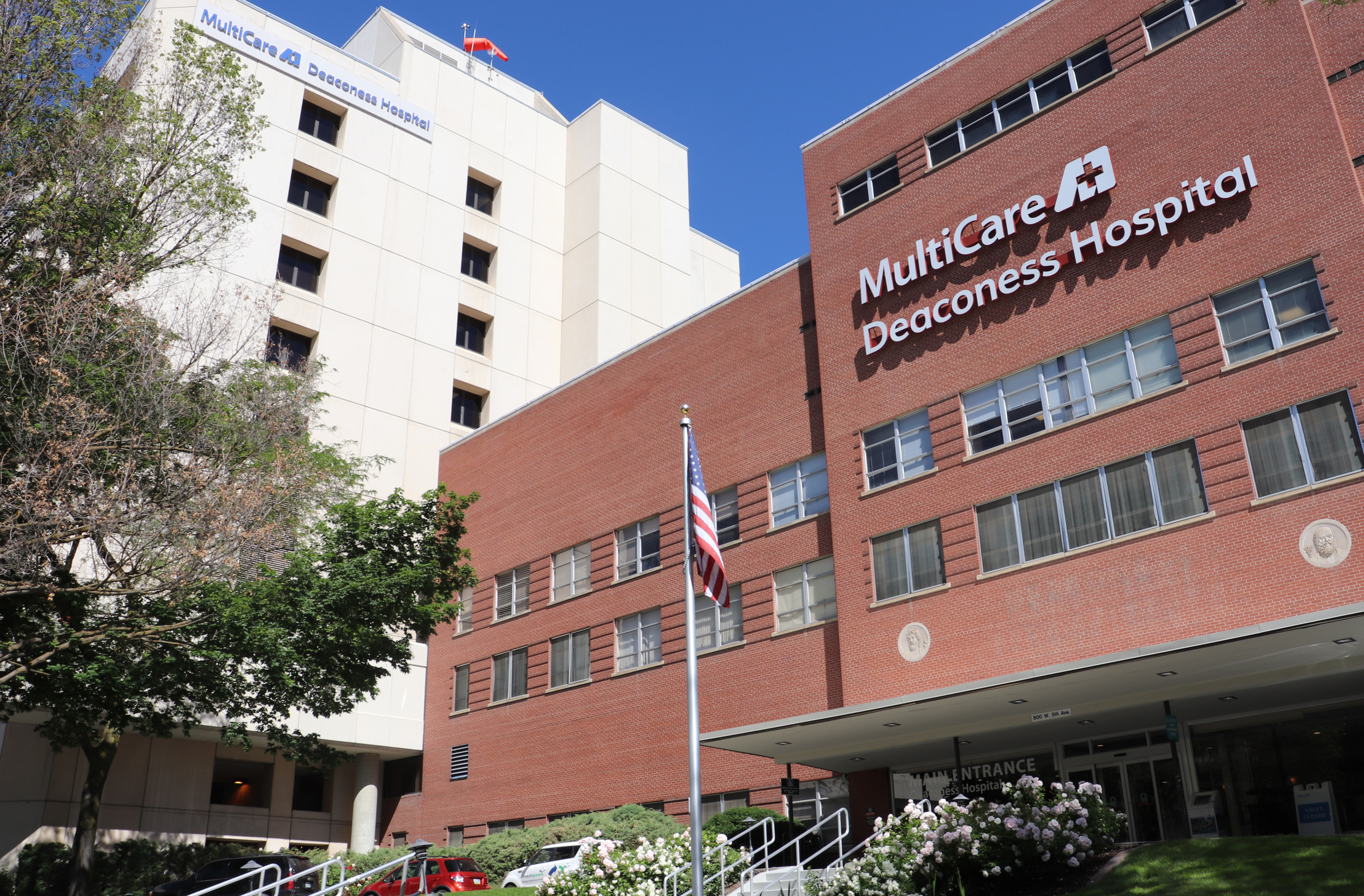
Deaconess, Valley and Rockwood Clinic join MultiCare
MultiCare purchases Deaconess Hospital, Valley Hospital and Rockwood Clinic, expanding its geographic footprint into the Inland Northwest and welcoming approximately 3,600 new employees. MultiCare becomes the largest community-based, locally governed nonprofit health system in the state of Washington.

MultiCare joins forces with local nonprofits to improve behavioral health
MultiCare and Navos, a community mental health organization based in King County, complete an affiliation. Together, they become the largest behavioral health provider in the state of Washington.
A year later, MultiCare’s Behavioral Health Network grows again when Greater Lakes Mental Healthcare, an organization that provides mental health and substance use disorder treatment in Pierce County, affiliates with MultiCare.

MultiCare partnerships aim to enhance care and support physicians
MultiCare embarks on two new partnerships. Physicians of Southwest Washington (PSW) and MultiCare enter into an agreement with the goal of improving health care delivery and management across the Puget Sound. MultiCare will help PSW continue to support local independent physician practices.
MultiCare also begins collaborating with Dispatch Health to bring on-demand, at-home care to the region.

Covington Medical Center builds new addition
Covington Medical Center adds a new four-story inpatient hospital. Named the Cecchettini Pavilion, the facility has 58 beds, three operating rooms, an inpatient pharmacy and lab, and more.

MultiCare Valley Hospital celebrates its 50-year anniversary
Valley Hospital celebrates 50 years of service to the residents of Spokane Valley. By then, Valley is known as a destination facility for joint surgery, among other procedures. According to a Spokesman-Review article, Valley performs more than 800 joint surgeries a year and was the first facility in Washington state to earn the Joint Commission’s advanced certification in knee and hip replacement.

New inpatient behavioral health hospital opens its doors
Wellfound Behavioral Health Hospital opens in Tacoma. A joint venture between CHI Franciscan and MultiCare, the hospital expands access to much-needed inpatient psychiatric care in Pierce and South King counties.

MultiCare opens first-of-its-kind clinic in Tacoma
In partnership with Tacoma Public Schools and the organization Communities in Schools, MultiCare opens a clinic at Oakland High School. The clinic provides students — and many students’ children — access to medical and behavioral health care without having to leave campus, supporting their ability to graduate.
Two years later, MultiCare opens another clinic at Mt. Tahoma High School.

MultiCare expands access to emergency care in the South Sound and Tacoma
MultiCare opens two neighborhood emergency rooms in Parkland and Bonney Lake as part of the system’s ongoing effort to improve access to health care in the South Sound.
That same year, MultiCare Allenmore Hospital completes an expansion of its emergency department, adding 14,600 square feet to the facility and enabling the hospital to care for up to 10,000 additional patients each year. The ribbon-cutting ceremony (pictured) is held in November.

MultiCare announces plans to build new stand-alone hospital for Mary Bridge Children's
After more than 30 years of sharing space with Tacoma General Hospital, Mary Bridge Children’s Hospital is getting a new home. The new hospital will be located on the corner of Division Avenue and Martin Luther King Jr. Way. The Mary Bridge Brigade makes the single biggest donation in the history of their organization, $10 million, to fund the new hospital, estimated to open in 2026.

Pulse Heart Institute expands to the Inland Northwest
MultiCare’s Pulse Heart Institute expands its services in the Inland Northwest with the addition of physicians and staff from Kootenai’s Heart Clinics Northwest.

Capital Medical Center joins MultiCare
MultiCare purchases Capital Medical Center, welcoming approximately 700 new employees into the organization. Throughout the hospital’s 37-year history, it changed hands eight times, with all owners prior to MultiCare being for-profit entities based outside of Washington.
Following the acquisition, MultiCare invests in much-needed infrastructure and equipment upgrades and dedicates the hospital’s pavilion to Dr. Angela Bowen, one of its founders.

MultiCare combats COVID-19 pandemic through vaccination
MultiCare sets up four mass COVID-19 vaccination sites in Puyallup, Tacoma, Auburn and Spokane, delivering approximately 250,000 vaccine doses to the community.
In addition, MultiCare’s Center for Health Equity and Wellness partners with local organizations to host 23 community-based vaccination events and 144 low-barrier vaccination pop-up clinics in neighborhoods, schools and community centers through Pierce County.

MultiCare, Yakima Valley Memorial partner to enhance oncology services
The population of Yakima County has grown swiftly over the past decade, and so too has the demand for oncology services; cancer is the second-leading cause of death in Yakima County in 2021. To help meet the growing need for cancer care in the community, MultiCare and Yakima Valley Memorial Hospital launch a new partnership.
Together, they focus on recruiting medical oncologists to the region and, while operating independently, share leadership of Memorial’s medical oncology team.
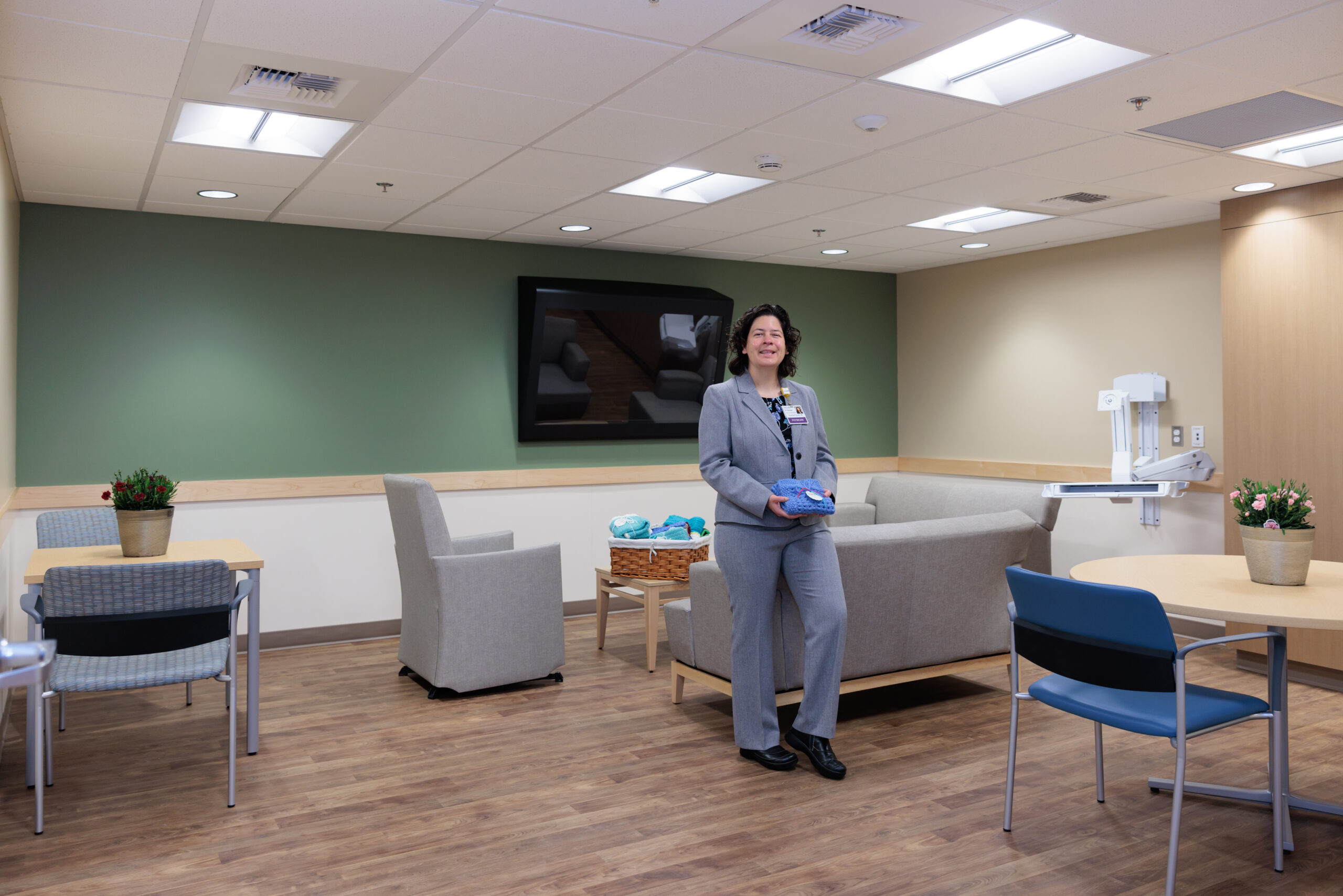
New inpatient unit at MultiCare gives pregnant people a safe place to recover from addiction
In July, the Substance Treatment and Recovery Training (START) unit begins accepting patients. Located at Good Samaritan Hospital, the 18-bed inpatient unit provides care for pregnant people with substance use disorder. Abi Plawman , MD, (pictured) is the START unit medical director.
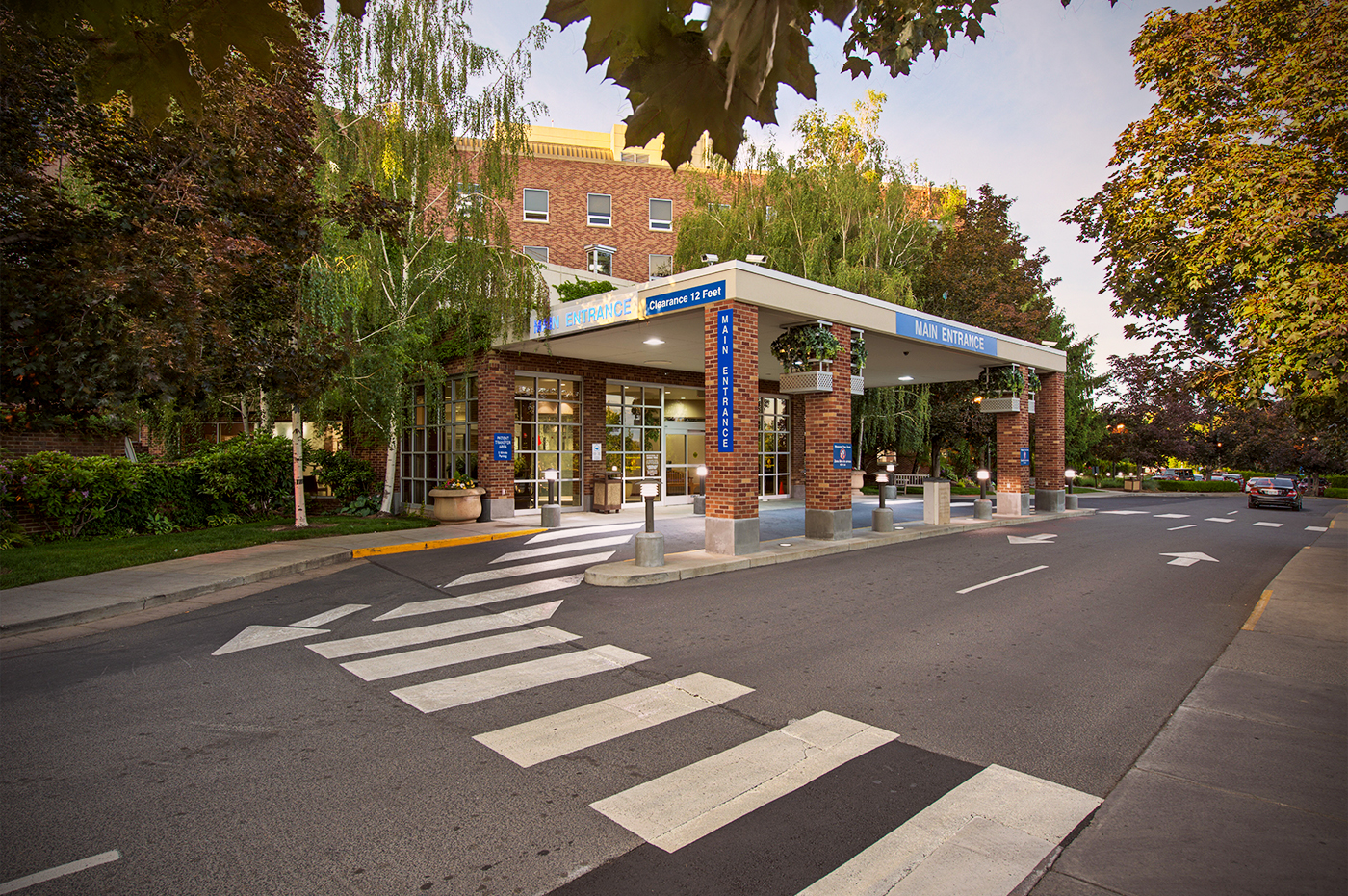
Yakima Valley Memorial Hospital joins MultiCare
Yakima Valley Memorial Hospital and its associated clinics become part of MultiCare. Now known as MultiCare Yakima Memorial, the 226-bed inpatient facility is MultiCare’s 12th hospital.
In addition to welcoming more than 2,700 employees into the organization, MultiCare announces plans to invest in improvements to Yakima Memorial’s facilities and services, with a focus on returning services that left the community over the last decade.
About this Timeline
The information in this timeline includes highlights from “The History of the Tacoma Orthopedic Association” by the TOA; “The Deaconess Story” by Priscilla Gilkey; “The Inland Northwest: A Modern History of a Dynamic Region” by Kay F. Reinartz; and other sources.
Please come back soon to discover new, exciting developments at MultiCare. You can also visit the MultiCare Vitals blog to learn more about our organization.